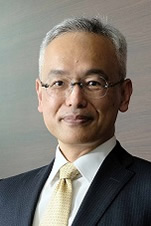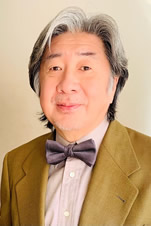2023 Recipients of C&C Prize
Group A

Dr. Yasunobu Nakamura Director, Riken Center for Quantum Computing |

Prof. Tsai Jaw-Shen Professor, Tokyo University of Science |
Citation
For Contributions to the Field of Quantum Information Technology, including the Development of Superconducting Qubits and Quantum Computers
Achievements
Quantum information technology, which applies the principles and phenomena of quantum mechanics to information processing, is a rapidly progressing field that covers a broad range of subjects, including quantum communications, quantum computing, quantum measurement, and quantum sensing. Quantum computers, which hold promise in efficiently solving problems that are difficult for conventional supercomputers, have been attracting much attention in recent years, and competition in their development has been intense.
In 1999, Dr. Nakamura and Prof. Tsai were the first to achieve a superconducting qubit, the basic element of superconducting quantum computers. They have been leaders in research and development in the field, and the technology has come to be applied to the development of quantum computers at several companies. Additionally, in March 2023, Dr. Nakamura put Japan’s first quantum computer into operation.
Dr. Nakamura entered NEC in 1992 after graduating from university and was assigned to the Fundamental Research Laboratories. He undertook research on the quantum state control of nanoscale superconducting devices together with Prof. Tsai, his superior at that time. In 1999, they controlled the superposition of the ground and excited states of a qubit based on a superconducting circuit containing Josephson junctions, a tunneling junction device. They observed the quantum oscillations between the two states. The circuit they used is called a Cooper-pair box in which a single Cooper pair (a pair of electrons) tunnels in and out of a small superconducting electrode. This was the moment in which a qubit, the basic element of a superconducting computer, was demonstrated for the first time on a solid-state device favorable to integration.
This achievement opened up the way for many researchers around the world to enter this newly created field. Dr. Nakamura and Prof. Tsai demonstrated two-bit gate control between superconducting qubits, quantum entanglement generation between them, quantum logic circuits, and quantum universal gates. They became pioneers in this research field through these achievements, which have become the foundation of quantum computer development in recent years. The qubits used in the quantum annealing machine commercialized in 2011 by D-Wave Quantum Systems Inc. in Canada were superconducting qubits. The quantum computer developed by Google in 2019 also used superconducting qubits.
Since taking up his post as professor at the Research Center for Advanced Science and Technology, The University of Tokyo, in 2012, Dr. Nakamura has been engaged with his colleagues in research targeting the generation, control, and measurement of quantum entanglement between a superconducting qubit and a microwave photon within a microwave cavity. They have also achieved coherent coupling between a superconducting qubit and a magnon, an elementary magnetic excitation in ferromagnetic material, and succeeded in controlling single magnons using quantum entanglement. These achievements constitute quantum-limit experiments in magnetism and spintronics and have the possibility of becoming new information processing technologies that can lead to applications such as quantum sensing and a quantum information interface between microwaves and light.
Dr. Nakamura joined the Riken Center for Emergent Matter Science (CEMS) in 2013. In 2021, he was appointed the founding Director of the Riken Center for Quantum Computing (RQC). In this capacity, he has been overseeing quantum computer research and promoting the research and development of quantum computers with collaborating institutions in the Quantum Leap Flagship Program (Q-LEAP) of the Japan Science and Technology Agency (JST). In March 2023, these efforts culminated in operating Japan’s first quantum computer based on a superconducting system and launching a quantum computation cloud service.
Prof. Tsai participated in the quantum information science research initiated by Riken in 2001 and became Team Leader of the Macroscopic Quantum Coherence Research Team, guiding the launching of this research. Since 2015, he has also held the post of Professor at Tokyo University of Science, where he has been promoting the study of superconducting quantum circuits based on Josephson junctions. Achievements coming out of this research include the direct observation of the coherent quantum phase slip (CQPS), on-demand tunable microwave single-photon source, and the construction of a system for detecting a single microwave photon propagating through a waveguide. These achievements are expected to lead to diverse applications besides quantum computers in superconducting electronics, quantum sensing, and quantum communications.
Dr. Nakamura and Prof. Tsai were the first to create a superconducting qubit as the basic element of superconducting quantum computers. Many research achievements through their efforts as pioneers and front-runners of quantum information technologies have contributed to the development of quantum computers that impact society in diverse ways. In view of their many and outstanding achievements, Dr. Nakamura and Prof. Tsai are deserving recipients of the C&C Prize.
